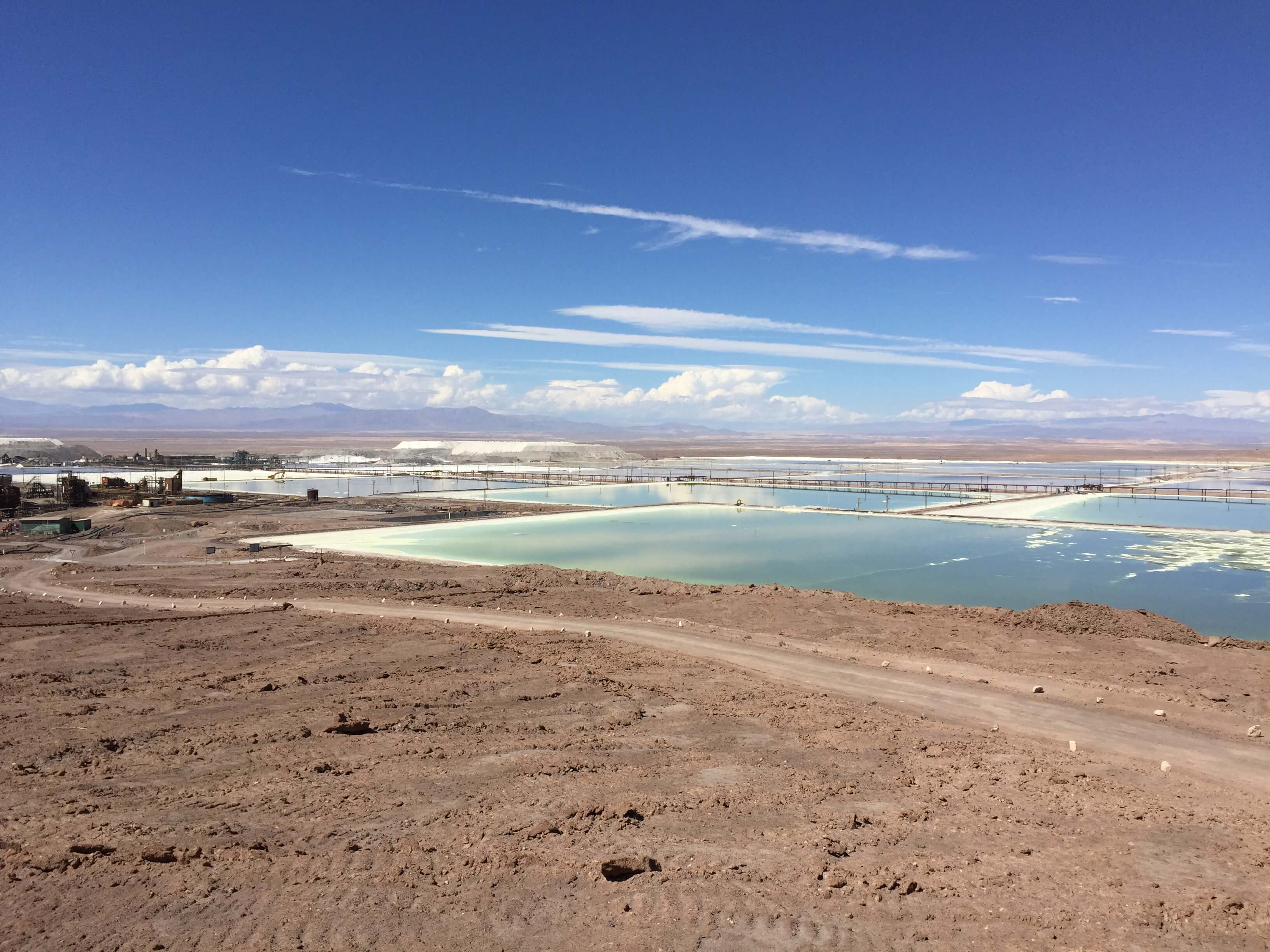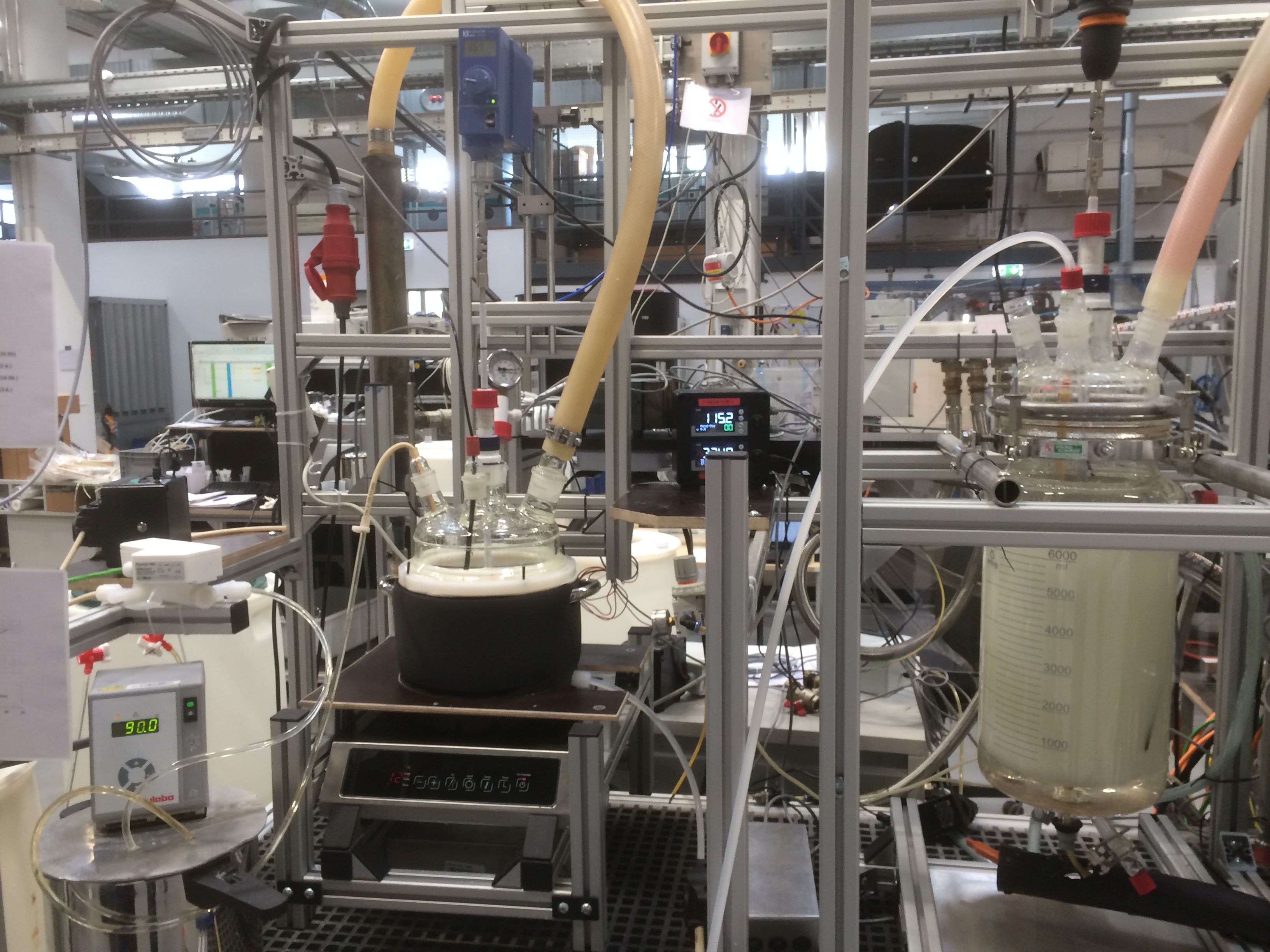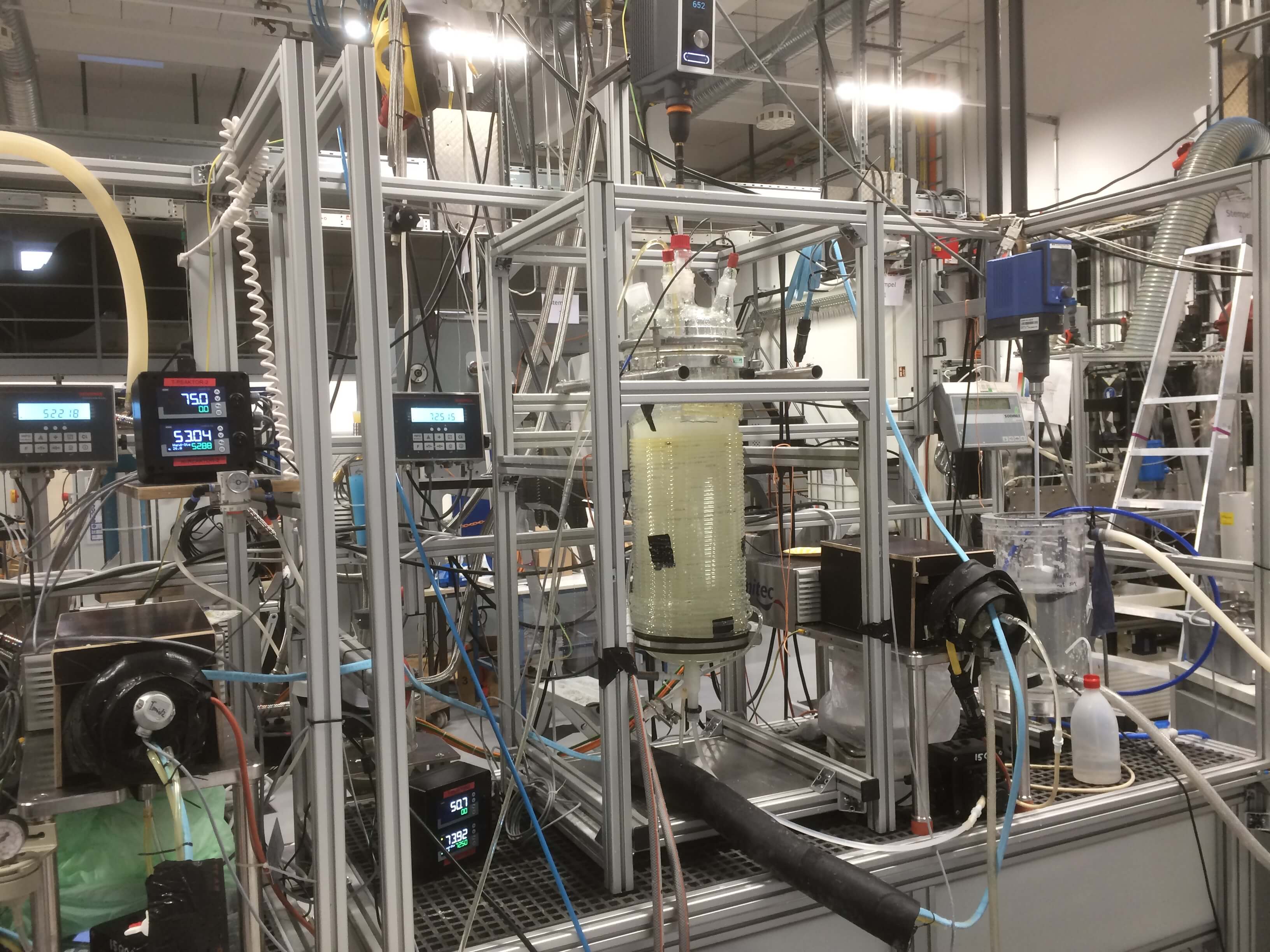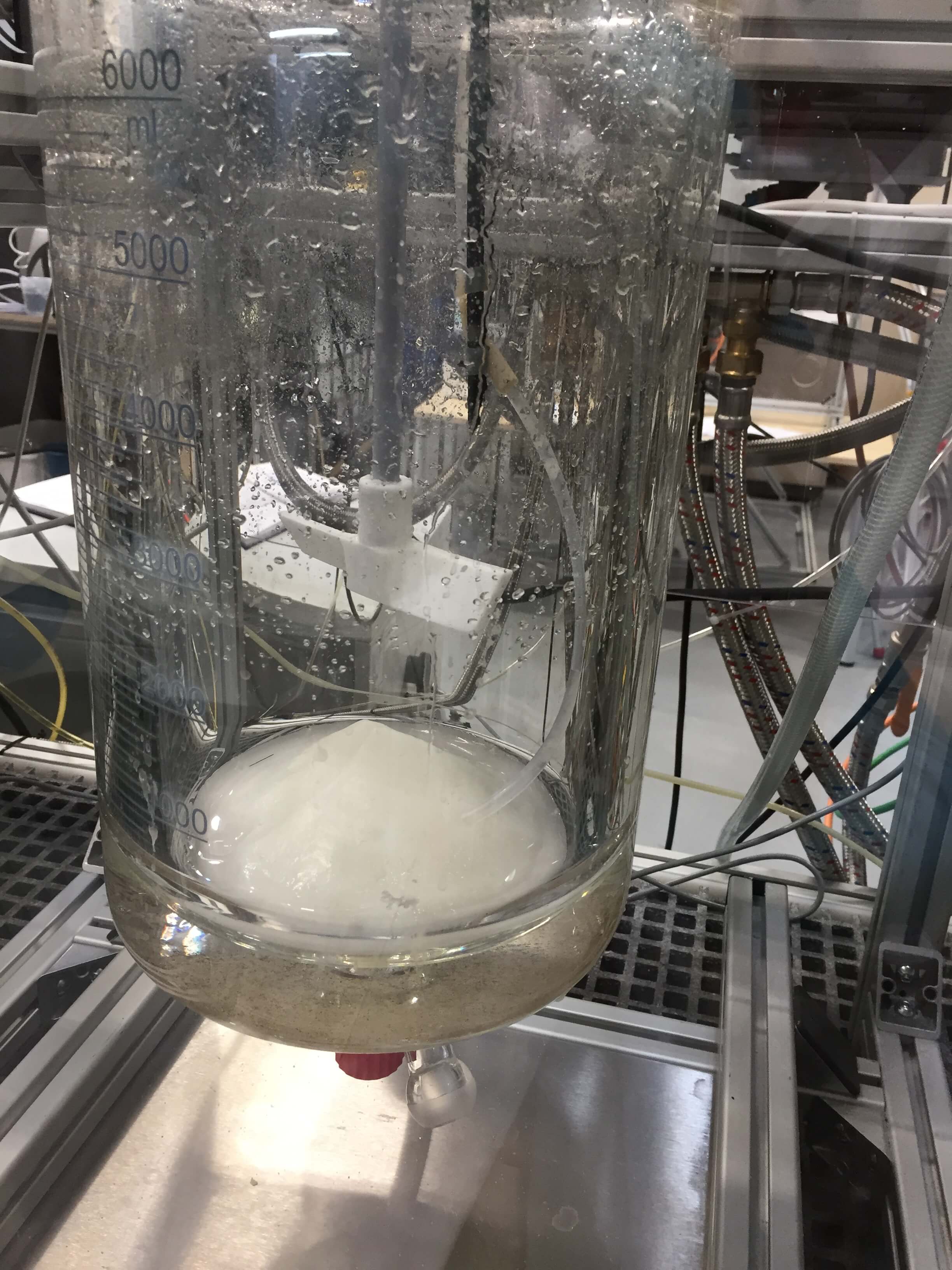| Duration: | 03/2020 - 07/2020 |
| Contracting Authority/ Sponsors: |
SQM Industrial S.A.; Fraunhofer Chile Research |
| Project Focus: |
From Chile Saltpetre to Solar Salt
Design and Evaluation of the Continuous Operation of a Production Process of Pure Sodium Nitrate from Brines of an Upstream Leaching Process



The Chilean mining company SQM extracts sodium nitrate from the mineral "caliche" in the Atacama Desert. As a high-temperature molten salt, the sodium nitrate is used as a heat transfer and storage medium for solar thermal power plants and in large heat storage facilities. SQM aims to make their processes more resource efficient and has developed a new process in the laboratory. We were able to support this development by implementing an intermediate step between the laboratory and an industrial-scale implementation. This was done within a few months and took the form of a pilot plant. In this way we were able to demonstrate both the technical feasibility of the process chain and its continuous operation. Contact initiation and monitoring of the project was carried out by Fraunhofer Chile Research.
Goal and task
The implementation of the new process chain has a number of advantages over the current state of the art technology. For the situation in the arid north of Chile, it is particularly important that this process enables a portion of the water to be recovered and results in a higher purity of the final product. Our task was to reproduce the process developed by SQM in a lab-scale pilot plant in our technical center, to operate it continuously and to determine the key parameters.
Background
Caliche Ore is mined from deposits in the Atacama Desert. In different production processes Nitrates, Potassium, Lithium and Iodine with its derivates can be obtained. Nitrates are produced after the caliche mineral has been crushed and subjected to a leaching process with water. From this leached solution, sodium nitrate is obtained by crystallization. This so-called Chile saltpetre was of enormous importance as a fertilizer in agriculture from the beginnings of mineral fertilization until the large-scale introduction of the Haber-Bosch process. Together with the salt brines, which are pumped from the underground in the Salar de Atacama (Atacama salt desert) and then fed into large solar evaporation ponds, it is further processed into various end products. Among these end products is the high grade salt for molten salt based thermal high temperature storage and heat transfer media for solar thermal power plants.
To demonstrate a new process chain developed by SQM, it was necessary to set it up on a pilot plant scale in a matter of months. The aim was to demonstrate its continuous operation and determine the relevant process parameters.
Handling of saturated and supersaturated solid-liquid mixtures at high temperatures
The special challenge of the whole project was that we were constantly dealing with saturated salt solutions at high temperatures or already supersaturated solutions with a high solid content his made selecting the conveyor technology, measurement and automation technology as well as the sample collection very difficult and demanded all of our previous experience, creativity and art of improvisation.
Small is not always fine
The question of scale was particularly challenging in this project. On the one hand, the highly corrosive, chloride-containing salts at temperatures above 100°C allow only very expensive resistant materials, so that for budget reasons the smallest possible implementation was necessary. The throughput of the plant also had to be kept small because the mother liquor had to be transported from Chile to Freiburg. On the other hand, there are hardly any components on the market for continuous evaporation apparatus, continuous crystallizers or continuous solid-liquid separation on a laboratory scale. Too small throughputs make the transferability to industrial scale more difficult. Above all, however, if the throughput is too small, problems with the further transport from one process stage to the next are encountered. These are problems that do not occur on an industrial scale: The precipitated crystals can get stuck on cross-sectional tapers of too small hoses and pipes and block the line. Once the fluid stands and cools down, massive precipitation occurs immediately and everything is cemented with a concrete-hard salt crust. By the time the pipe is free again, levels have changed, concentrations and temperatures have "run away". A continuous operation of the entire process chain at defined process parameters is no longer possible and the process has to be restarted at great effort.
New level of flexibility in the design of separation processes and their automation
The process chain of evaporators, filters, crystallizers and centrifuges, which was implemented on a pilot plant scale, was ultimately a mixture of do-it-yourself construction, the art of improvisation and high-quality, partly rented apparatus. Especially the developed automation concept, which allowed a partial automation with control loops for single process steps, has lifted our possibilities for fast, flexible setups of complex process chains to a new level.
Sampling / Analysis
We and our external partners were also required to do our utmost in sampling and analysis. The following applied to every sampling: The proportion of solid to solution changes as soon as the sample is taken and thus the density and composition of the clear phase changes. Experience has shown how important it is to be able to perform such ion analyses flexibly in-house. We implemented this immediately after the project, in order to perform analyses in-house for both cations with ICP-OES and anions with IC in the future.
Successful ending despite Corona
Due to a strict lock-down in Chile in the wake of the SARS-CoV-2 pandemic, our project partners were only able to consult with us from their living rooms during the entire project duration and could also not – as previously planned - be present for a final 20 hour plant operation. Nevertheless, we were able to complete the project within the tight schedule to the satisfaction of our clients. With video calls and recordings the partners were able to participate in test runs in the laboratory. Even safety instructions and an introduction to the proper operation of special apparatus could be provided in this way. The proof of stable operation required a final effort. Due to the partial automation of the process and the non-automated sampling, the whole project team needed to operate the plant in shifts for 24 hours. Ultimately this procedure was successful. The key parameters, such as the actual ion composition of the product salt, matched the values from the simulations very well, so that the functionality of the new separation process could be confirmed.
